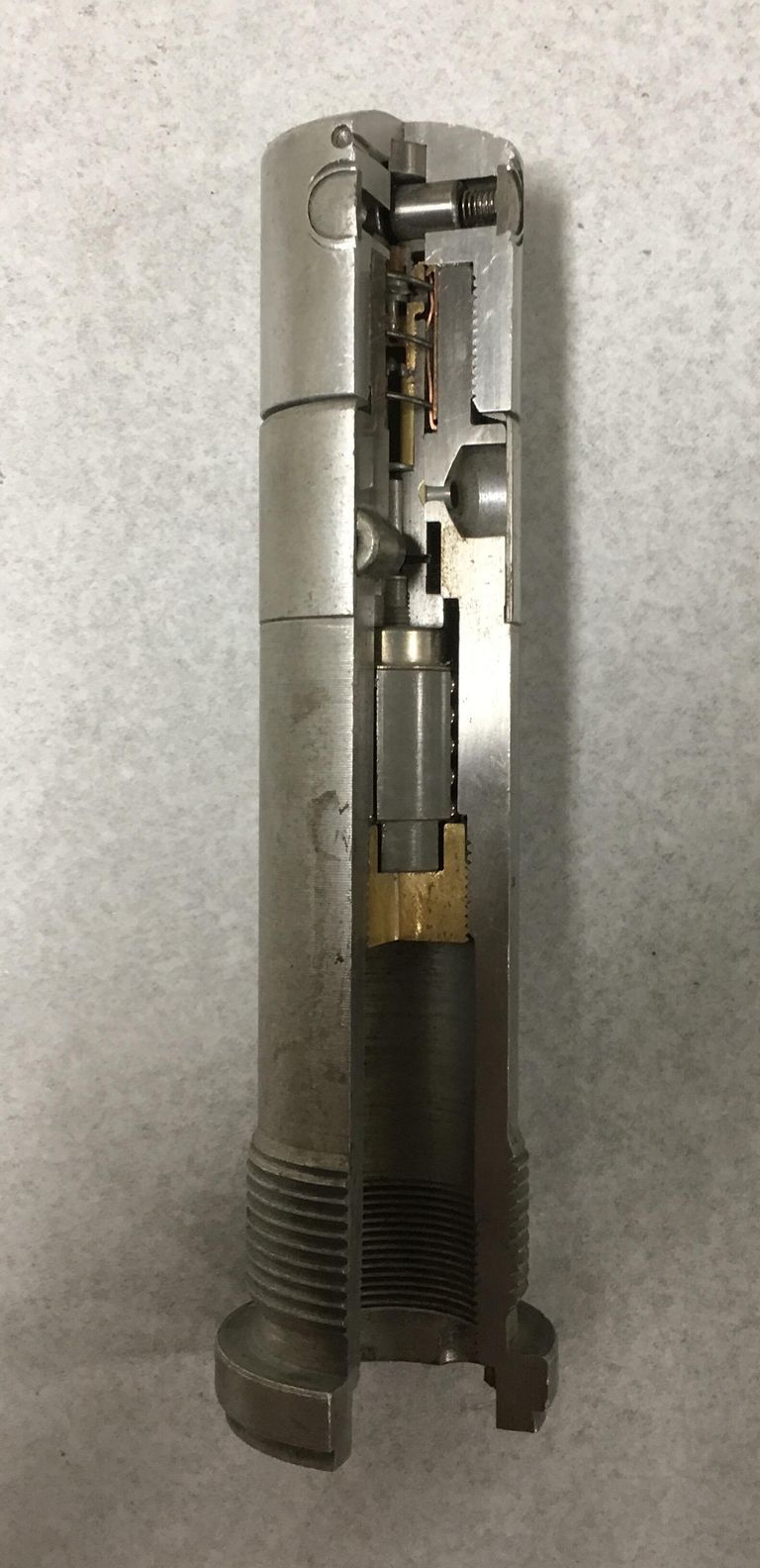Artifact Gallery:
Battleship USS Iowa Museum Los Angeles collects relevant artifacts to help tell the story of the ship and the Surface Navy to a broad audience. Below you will find some of our accessioned artifacts in our collection. Not all items are on display and are monitored according to our collections management policy.
We accept new items in the collection on a case-by-case basis. Click here for more information.
Mark 28 Mod 15 Base Detonating Fuze
Object/Artifact
Cutaway US Navy Mark 28 Mod 15 base detonating fuze for artillery projectiles. The Mark 28 fuze is very similar in design to the Mk 19. The Mk 28 fuze will function on ¼ to ½ -inch plate and on water. Mod 15 is fully moisture resistant, with a silica gel capsule in the auxiliary detonator plunger and all external joints coated with bakelite varnish over a lacquer base. For use with 16”/50 H.C. rounds, Mk 28 fuzes were replaced by Mk 39 fuzes, which had slightly weaker springs to compensate for the reduced rate of spin at very long ranges.
The Mk 28 fuze was used in a variety of 4” 5”, 6”, 7”, 8”, 14” and 16” projectiles including the 5”/38 A.A. Common and the 16”/50 H.C., both of which were used on the USS Iowa.
Threaded length, inches 0.96
Threads 11 Left Hand
Weight 2 lb 6 oz
Material Body-manganese steel
Nose Cap – duralumin (unpainted)
Delay None
Description: The fuze is composed of two major parts, the fuze body and the nose cap. The body contains the auxiliary detonator plunger, the detonator plunger, the detonator plunger detents, the anti-creep spring assembly, and the firing train. The auxiliary detonator is surrounded by twenty ball bearings and bears against the bottom of the detonator plunger. Fitted over the top of the detonator plunger is the anti-creep spring assembly consisting of an inner and an outer cup separated by an anti-creep spring. The outer cup will not move, and the inner cup is crimped over the top of the detonator plunger and held in position by the sensitive primer, secondary firing pin, secondary primer, delay element, detonator and booster lead-ins and lead-outs which are out of line in the unarmed position.
The nose cap, which is secured to the end of the body by a threaded joint, houses the sensitive firing pin and firing pin detents. The sensitive firing pin is held in place by two stakes but is referred to as a “floating” firing pin, since it can move downward slightly. Ninety degrees removed from the two detents are two holes in the nose cap. A locking pin is provided to lock the nose cap in position.
Operation: The force of set-back causes the sensitive firing pin to move down on the firing pin detents, thus creating friction and holding them in. When the projectile leaves the bore of the gun, creep causes the firing pin to move forward again, thus releasing the firing pin detents. Centrifugal force will move both sets of detents outward against their springs, and the fuze is then completely armed. The detonator plunger is prevented from moving forward on creep because of the anti-creep spring, but on impact the auxiliary plunger, acting as an inertia weight, pushes the detonator plunger forward. This action moves the inner cup forward, thus compressing the anti-creep spring, and brings the booster lead-ins and lead-outs in line. The sensitive primer in the top of the detonator plunger is carried on to the sensitive firing pin, and the explosion of the sensitive primer accomplishes two things:
1. The gases resulting from the explosion pass through the portholes on the side of the primer container and build up a high pressure, expanding that part of the cup which is adjacent to the holes in the nose cap. This action locks the detonator plunger in the fired position and keeps the firing train lined up.
2. The shear wire that has been holding up the secondary firing pin is broken, and the secondary firing pin is driven down into the secondary primer, thus setting off the delay element of 0.01 second and the detonator and booster elements.
N1600010

